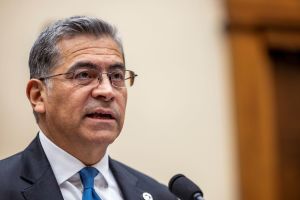Mercedes Benz Autonomous Bus Update: Future Bus Drove Through Amsterdam
Self-driving cars have been relatively rising, and Mercedes Benz is among those who joins the futuristic trend, with its latest autonomous bus, which recently drove around Amsterdam.
Hailed as the "local public transport of the future,: the public bus named Future Bus was tested in a 12 mile route, from Amsterdam's Schipol airport to Harlem.
The route included traffic lights, and tunnels. It also navigated with people, which made the test really impressive. Although it was autonomous, there was a driver who took in charge of the drive test in case of any possible emergency.
As urban populations continue to increase, Mercedes' Wolfgang Bernhard believes that self-driving will grow in demand in the transportation industry. "We are living in an increasingly urban world. Cities are home to more than 50 percent of the world's population. And the number keep increasing rapidly. If more and more people eat, sleep, and work in cities, a number of big challenges emerge. One major challenge is to move all of these people and to move them fast, safely, and comfortably. This means we need attractive, public transportation," Bernhard, the CEO of Daimler Trucks and Buses said in a press event.
Future Bus' Features
Being a pioneer in autonomous trucks, Mercedes was able to build CityPilot, a technology platform used in the Future Bus. The platform features lane-keeping, longitudinal guidance, acceleration and braking functionalities, which will be convenient for carrying and dropping passengers. The CityPilot is in fact said to improve safety by eliminating human error. It also improves comfort because it provides smooth driving.
The self-driving bus also has the ability to recognize traffic lights, steer through tunnels, and can even detect pedestrians and bicyclists. It has a top speed of 70 km/h (43 mph), and is only programmed to drive on Bus-Only lanes.
There were also 10 security cameras, long and short radar sensors, and GPS planted in the bus to enable it to interact with its surroundings. The bus is also said to be more fuel efficient than any normal city bus.
Design
To assure the convenience of passengers, the Future Bus was built with high-end designs, similar to a longue. It lets commuters sit comfortably and accordingly, for it is separated into three areas—one area for those who wish to go down immediately, one for those who are looking for routes information, and one for those who are travelling to a far place and are staying longer in the bus.
Communicating is also convenient while travelling in the automated bus for it is built with a Wifi Connection and two 43-inch displays.
Self-driving bandwagon
The interest in autonomous vehicles has been increasing rapidly, according to an article. San Francisco, Austin, Columbus, Denver, Kansas City, Pittsburgh, Portland have also been taking their part in being pioneers of this technology. By doing so, each city was given 100,000 USD allowance from the US Department of Transportation (Smart City Challenge) for their transportation system proposals.




























